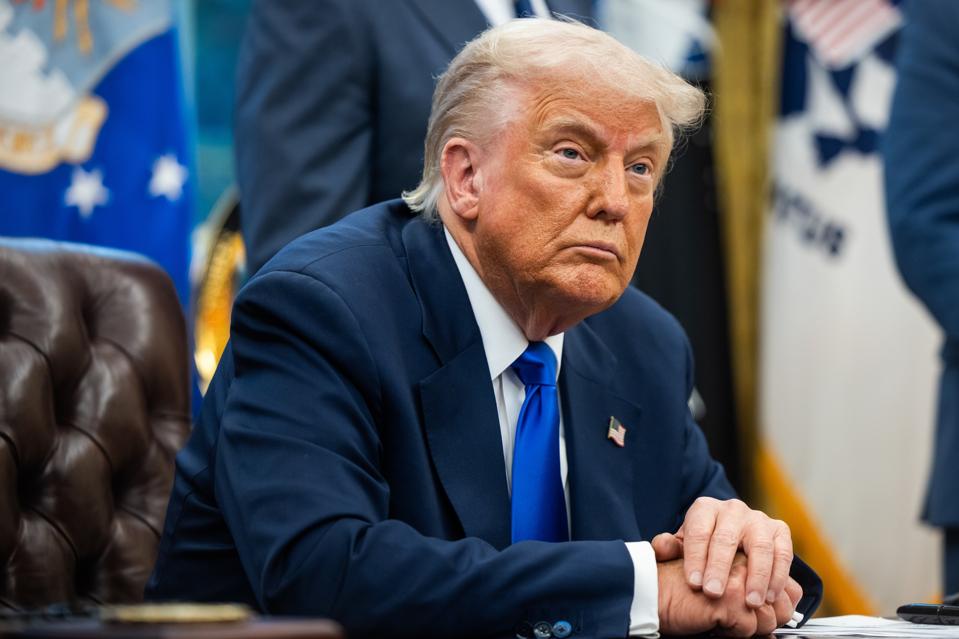On Truth Social, President Trump posted yesterday that the United States “will pay the same price as the Nation that pays the lowest price anywhere in the World.” He wrote that prices would drop from 30% to 80% off of their current levels, adding that he would sign “one of the most consequential executive orders in history” this morning. But the order raises more questions than it answers. And potential logistical and legal challenges loom.
Trump is resurrecting a plan from his first term in office to peg prices paid in the U.S. to those in other comparably wealthy countries in terms of gross domestic product per capita. Specifically, the then envisioned most favored nation model would pay (reimburse healthcare providers) no more for high-cost physician-administered drugs than the lowest price drug manufacturers receive in other peer nations.
In 2018 and 2020, the Department of Health and Human Services proposed different methods, including an MFN model, to reduce Medicare prescription drug spending in the U.S. by tying prices of physician-administered drugs to an international index comprised of a group of countries with a similar GDP per capita. An executive order issued by Trump in 2020 was blocked in the courts before it could be implemented.
Unlike the proposal from the first administration, the executive order signed today pursues an MFN strategy in separate stages. First, it says that within a month of the date of the order, the Secretary of HHS will “communicate most-favored-nation price targets to pharmaceutical manufacturers to bring prices for American patients in line with comparably developed nations.”
Given the differences in timing of launches of drugs across countries, price setting by reimbursement authorities and dosing and packaging, it will be a difficult task to create a commensurate price index between the U.S. and its peers. And locating proprietary net prices will be hard in some international jurisdictions. Presumably, experts at HHS will be in charge. But after cuts at HHS, the Office of the Assistant Secretary for Planning and Evaluation group is no longer employed to help with such analyses.
And then, the administration wants drug makers to voluntarily sell their wares at MFN prices directly to patients, though there’s no legal framework that would force manufacturers to abide by this request. The executive order then looks to “facilitate direct-to-consumer purchasing programs for pharmaceutical manufacturers that sell their products to American patients at a most-favored-nation price.”
Though exceptions exist, such as in the relatively new weight loss classes of medications, most firms don’t have a set-up in place for DTC sales of drugs to patients. And so, despite the help promised from the federal government, it’s not guaranteed to be a smooth rollout should the plan get that far.
Furthermore, the order appears to presume that the MFN prices of medications sold directly to patients would be less than what they’re currently charged at the pharmacy counter. However, it’s unknown if this would be the case for the majority of pharmaceuticals. Besides the uninsured or those who don’t have certain medications covered like obesity drugs, most insured patients in Medicaid, Medicare and the commercial sector pay less in co-payments for most medicines at the pharmacy counter than an MFN price, even if that price is 30% to 80% lower than in the U.S.
If DTC sales with MFN prices fail to materialize or don’t accomplish their goals, the Secretary of HHS “shall propose a rulemaking plan to impose most-favored-nation pricing.” Here, the executive order lacks any detail, however, regarding which subset of drugs will be included, which countries will be involved in establishing an MFN index, how (through what mechanism) the administration intends to pursue its objectives, and to whom—which patients or beneficiaries of which public programs, such as Medicare and Medicaid—an MFN model would be applicable or whether it would also apply to commercially insured patients.
And by using the word “impose” at this stage in the process it lays out, the Trump administration could run afoul of constitutional issues. Legally, there could be challenges to mandating that drug makers sell at MFN prices, as this may be seen as violating the constitutional Commerce Clause. This stipulates that only Congress has the power “to regulate commerce with foreign nations, among states, and with the Indian tribes.”
The White House says that “Americans must have access to the most-favored-nation price” for pharmaceuticals and that it will take “immediate steps to end global freeloading.” Here, the administration pins part of the blame on higher U.S. prices on “foreign nations,” as they’re “forcing American patients to pay for a disproportionate amount of global pharmaceutical research and development, including by suppressing the price of pharmaceutical products below fair market value.”
But this assumes that drug prices overseas are “below fair market value.” This could very well be true. But it ignores the fact that drug pricing in international markets is often subject to a rigorous process in which governments and quasi-governmental agencies attempt to establish the value of newly approved therapeutics using cost-effectiveness and other measures and adjust net prices accordingly.
One can question the methodologies used and whether overseas authorities get the alignment of price and value right. Nevertheless, the Trump administration can’t disregard that a comprehensive cost-effectiveness and budgetary impact assessment underlies most pricing arrangements. As such, it’s highly unlikely that other nations would go along with manufacturers raising the prices of pharmaceuticals. Moreover, government budget constraints in Europe and elsewhere are tight, with strict rules around cost containment coupled with adherence to the objectives of maintaining sustainable healthcare systems in which universal access is guaranteed.
As spelled out thus far, the executive order on lowering drug prices to those of an MFN leaves out critical details on its implementation and sidesteps logistical and legal hurdles which may prove tough to overcome.

